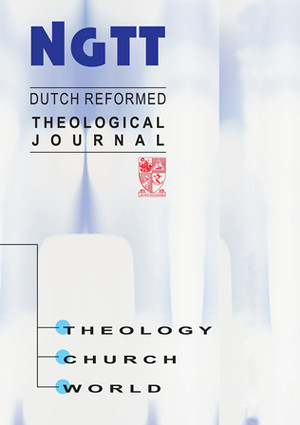Dealing with interwoven memories and histories: some perspectives in conversation with William Kentridge’s "History of the Main Complaint"
DOI:
https://doi.org/10.5952/54-3-4-393Keywords:
Memory, History, Interwoven memories, Remembering, Reformed churchesAbstract
The article discusses the notion of memory and history as interwoven phenomena. It was originally presented towards the end of a conference on “The Reformed Churches and the struggle for Justice in South Africa: Remembering 1960-1990.” The article highlights certain characteristics of the project in order to situate it within a broader project of memory-work. It then continues to discuss an artwork of William Kentridge, History of the Main Complaint, to illuminate various levels on which memory and history as interwoven phenomena might be understood. Finally, memory and history are discussed as being interwoven phenomena with regards to its crushing or curing abilities, temporality, topics it deals with, and those who remember.Downloads
Published
2013-12-19
How to Cite
Van Tonder, H. (2013). Dealing with interwoven memories and histories: some perspectives in conversation with William Kentridge’s "History of the Main Complaint". NGTT | Nederduitse Gereformeerde Teologiese Tydskrif, 54(3&4). https://doi.org/10.5952/54-3-4-393
Issue
Section
Discourse | Diskoers
License
Copyright of all NGTT material belongs to the Pieter de Waal Neethling Trust (PDWN Trust). The PDWN Trust is a trust fund established in 1932 with the aim of promoting quality theological research and publications.
The PDWN Trust pledges to maintain a legitimate scholarly record of the author's work and to defend the author's article against plagiarism and copyright infringement.
The PDWN Trust is committed to full Open Source publishing. This means that all articles published in NGTT will gradually be made freely available online. Authors maintain the right to:
- Share and self-archive their work.
- Make printed copies of their article for educational use.
- Present their article at a meeting or conference and distribute printed copies of the article
- Adapt and expand their published journal article to make it suitable for their thesis or dissertation.
- Republish the article (ensuring that the original article is cited as published in NGTT).
For any questions or queries in this regard, please contact the Editor.


